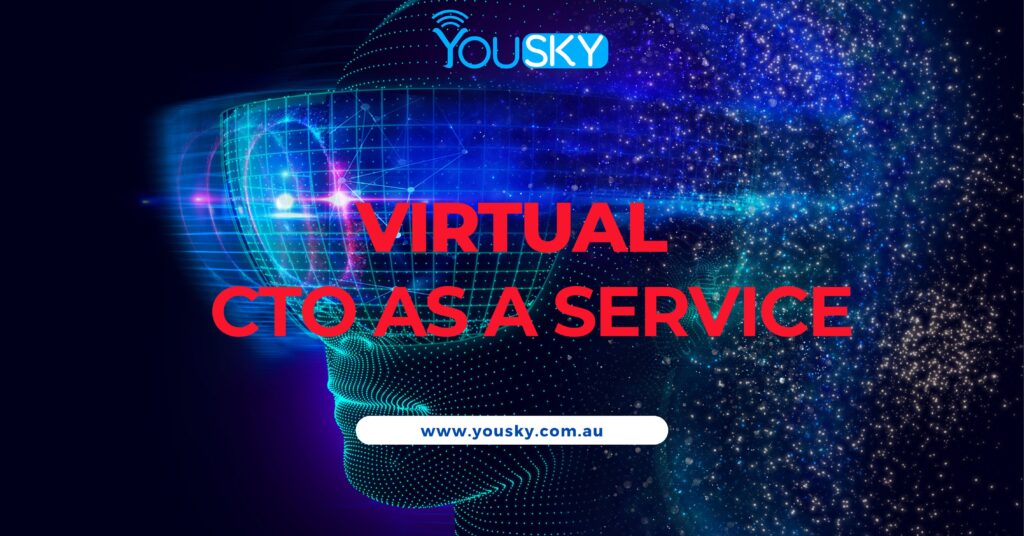
Virtual CTO vs. In-House CTO: Which Is Right for Your Business?
In an era where technology drives business success, having the right leadership in your IT department is crucial. The Chief Technology Officer (CTO) role has evolved from managing IT infrastructure to leading innovation, ensuring cybersecurity, and aligning technology with business strategy. Companies now face a critical decision: Should they hire an in-house CTO or opt for a Virtual CTO?
This article explores the differences between a Virtual CTO and an in-house CTO, weighing the pros and cons of each to help you decide which option is best suited for your business.
Understanding the Roles
In-House CTO:
An in-house CTO is a full-time executive responsible for overseeing the company’s technology strategy. This person works closely with other C-level executives, leads the IT department, and plays a pivotal role in driving digital transformation and innovation. In-house CTOs are deeply embedded in the company culture and are expected to have a comprehensive understanding of the business’s long-term goals.
Virtual CTO:
A Virtual CTO, on the other hand, provides the same strategic leadership and expertise but operates remotely, often on a part-time or project basis. Virtual CTOs are typically seasoned professionals who offer their services to multiple companies, providing technology guidance, strategy, and oversight without the need for a full-time commitment. This model is particularly popular among small to medium-sized businesses and startups that require top-tier expertise but lack the budget or need for a full-time CTO.
Key Considerations in Making the Right Choice
- Cost Implications
- In-House CTO: Hiring an in-house CTO involves significant costs, including salary, benefits, bonuses, and possibly equity. In the U.S., the average salary for a CTO can range from $200,000 to $300,000 annually, not including additional compensation. For smaller businesses, this can be a substantial financial burden.
- Virtual CTO: A Virtual CTO offers a more cost-effective solution. Businesses only pay for the services they need, which can be structured as hourly rates, monthly retainers, or project-based fees. This flexibility allows companies to access high-level expertise without the long-term financial commitment associated with an in-house CTO. Conclusion: If budget constraints are a concern, a Virtual CTO is likely the more economical choice, providing access to expertise at a fraction of the cost.
- Availability and Commitment
- In-House CTO: An in-house CTO is fully dedicated to your business. They are available to address issues, lead teams, and participate in strategic planning at all times. This full-time commitment ensures they are always aligned with the company’s goals and can rapidly respond to any challenges that arise.
- Virtual CTO: A Virtual CTO, while highly experienced, may divide their time among multiple clients. This could mean less immediate availability and a more strategic, high-level focus rather than day-to-day management. However, many Virtual CTOs offer flexible arrangements to accommodate urgent needs. Conclusion: If your business requires constant, hands-on leadership and immediate availability, an in-house CTO may be the better choice. For companies that need strategic guidance rather than daily oversight, a Virtual CTO can be sufficient.
- Expertise and Specialization
- In-House CTO: An in-house CTO is often deeply familiar with your industry and company-specific needs. Over time, they develop a nuanced understanding of your business operations, customer base, and technology stack. This deep familiarity can lead to more tailored and effective solutions.
- Virtual CTO: Virtual CTOs bring a broad range of experiences from working with various industries and businesses. They often have a diverse skill set and are up-to-date with the latest technologies and trends. This can be particularly beneficial for companies looking to innovate or explore new technological frontiers. Conclusion: If your business operates in a highly specialized industry or requires a deep, ongoing understanding of its unique challenges, an in-house CTO may be more effective. However, if you’re looking for fresh perspectives and a wide range of expertise, a Virtual CTO could be the better option.
- Scalability and Flexibility
- In-House CTO: As your business grows, an in-house CTO can scale their efforts to match your expanding needs. However, this also means that as the business grows, the cost and complexity of maintaining an in-house CTO will increase. Additionally, if your business needs to pivot or scale back, the fixed cost of an in-house CTO can become a liability.
- Virtual CTO: A Virtual CTO offers unparalleled flexibility. As your business’s needs change, you can easily adjust the level of engagement with your Virtual CTO. This scalability is ideal for startups or businesses experiencing rapid growth, as it allows them to access top-tier leadership without overcommitting resources. Conclusion: For businesses in a state of flux—whether scaling rapidly or navigating uncertain markets—a Virtual CTO offers the flexibility to adapt without the constraints of a full-time hire.
- Integration and Company Culture
- In-House CTO: Being physically present and part of the team allows an in-house CTO to immerse themselves in the company’s culture. They can build relationships, inspire teams, and drive a unified vision across the organization. Their daily interaction with employees fosters trust and alignment with the company’s mission.
- Virtual CTO: While a Virtual CTO can integrate into your team through virtual meetings and occasional on-site visits, their remote nature may limit their ability to influence company culture. However, modern collaboration tools and communication platforms can mitigate this challenge, allowing Virtual CTOs to maintain a strong presence despite being off-site. Conclusion: If building and maintaining a strong company culture is a priority, and you value face-to-face interactions, an in-house CTO might be the better fit. For companies that are already operating in a remote or hybrid environment, a Virtual CTO can integrate effectively with the right tools and processes.
- Risk Management and Cybersecurity
- In-House CTO: Cybersecurity is a critical concern for businesses of all sizes. An in-house CTO is fully dedicated to developing and implementing robust security measures, ensuring that your business is protected against emerging threats. Their deep familiarity with your systems allows for proactive risk management and quick response to security incidents.
- Virtual CTO: A Virtual CTO brings a wealth of experience in cybersecurity from working with various companies and industries. They can offer insights into the latest threats and best practices. However, their ability to implement and monitor security measures may be more limited compared to an in-house CTO who is fully immersed in your systems. Conclusion: If cybersecurity is a top priority and requires constant oversight, an in-house CTO may offer more peace of mind. For businesses that need high-level guidance and strategic input on cybersecurity, a Virtual CTO can provide valuable expertise.
Making the Right Decision for Your Business
The choice between a Virtual CTO and an in-house CTO ultimately depends on your business’s unique needs, budget, and growth stage. Here’s a quick summary to help guide your decision:
- Choose an In-House CTO if:
- Your business requires constant, hands-on leadership.
- You operate in a highly specialized industry.
- You value deep integration with company culture.
- Cybersecurity and risk management demand continuous oversight.
- Choose a Virtual CTO if:
- Your budget does not justify a full-time executive.
- You need flexibility and scalability in your technology leadership.
- You’re looking for a broad range of expertise and industry perspectives.
- Your business is navigating rapid growth or uncertain markets.
Both in-house and Virtual CTOs bring valuable expertise and leadership to your business. The key is to assess your current and future technology needs and choose the option that aligns best with your goals and resources. Whether you opt for the full-time commitment of an in-house CTO or the flexibility and cost-efficiency of a Virtual CTO, having the right technology leadership in place is essential for driving innovation and achieving long-term success.
Explore Yousky’s Virtual CTO as a Service offering:
If your business is looking to leverage top-tier technology leadership without the financial commitment of a full-time executive, Yousky’s Virtual CTO as a Service is the ideal solution. Our seasoned Virtual CTOs bring a wealth of industry experience, offering the strategic guidance your business needs to innovate, scale, and stay ahead of the competition. With flexible engagement models tailored to your specific requirements, Yousky’s Virtual CTO service provides the expertise to drive your digital transformation, optimize IT infrastructure, and strengthen cybersecurity—all at a fraction of the cost of an in-house CTO. Choose Yousky and empower your business with the technology leadership it deserves.



